Silk Road Beginnings: Buddhist Cave Complexes and the First Global Encounters Across Asia
1/24
There's no tags or description
Looks like no tags are added yet.
Name | Mastery | Learn | Test | Matching | Spaced |
|---|
No study sessions yet.
25 Terms
Ajanta Caves, western India, 2nd century BCE - 5th century CE
picture
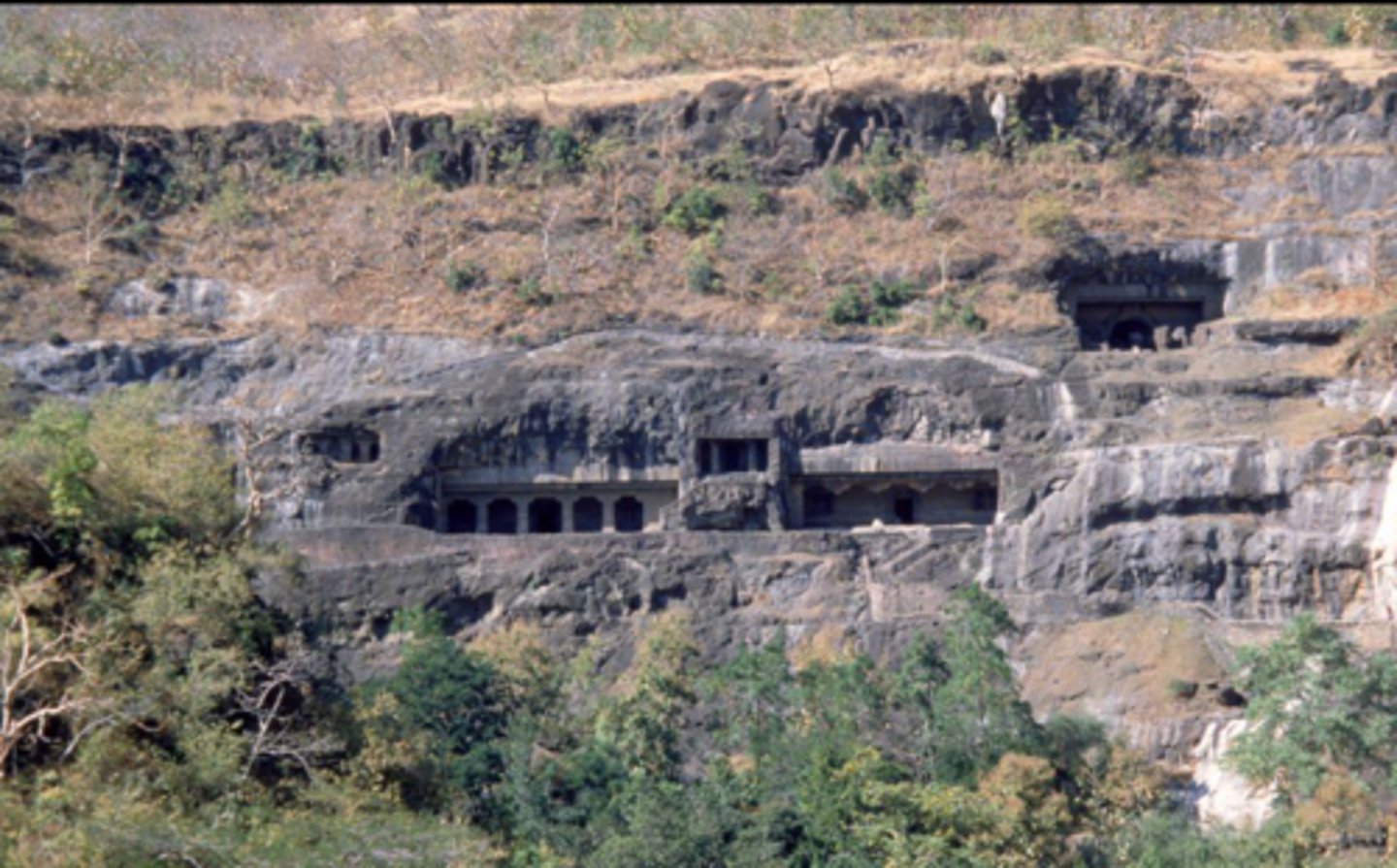
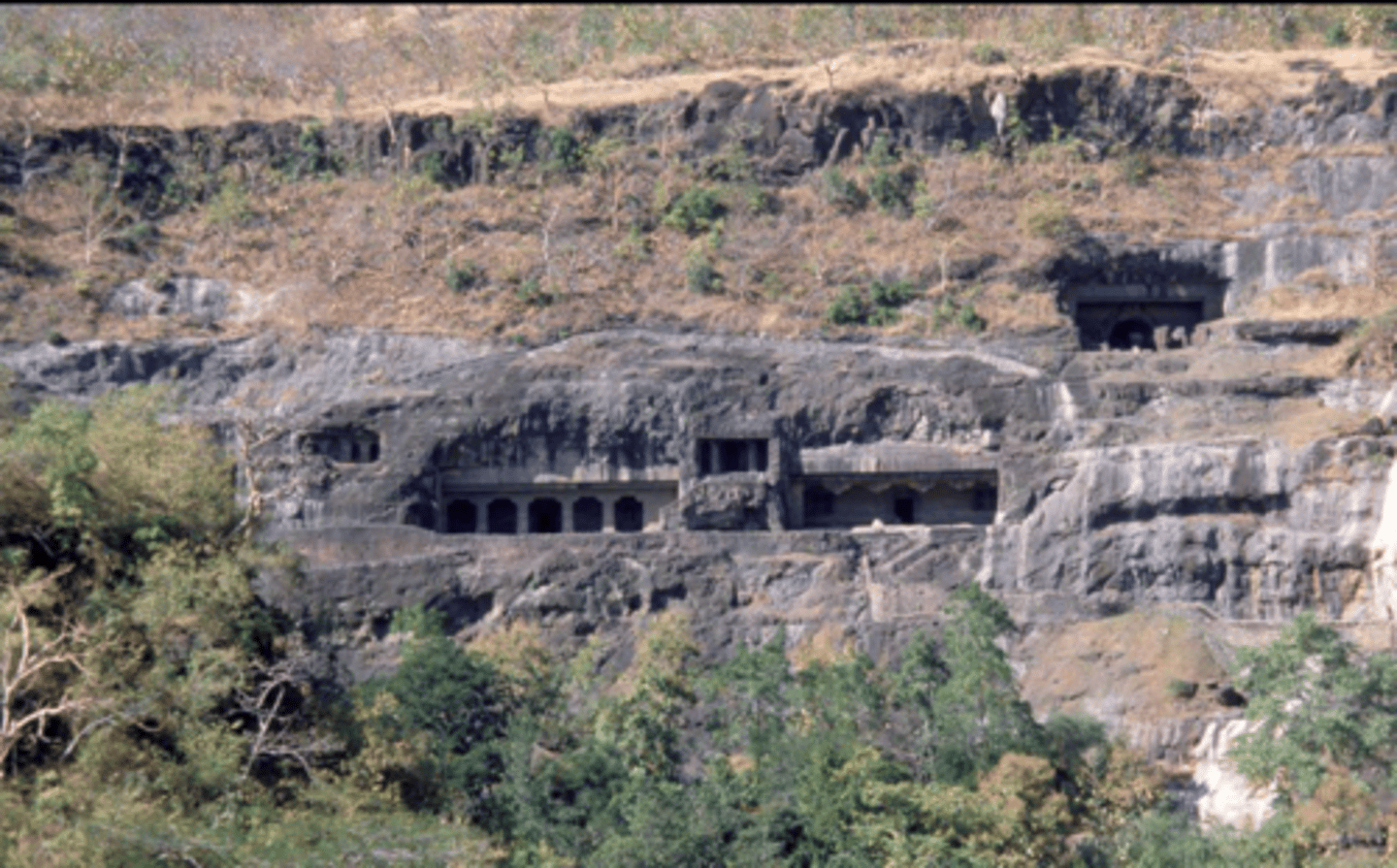
where were the ajanta caves built and why
away from a city or silk road, but still close enough to the monks so they could come for buddhist pilgrimages from all over the world to worship
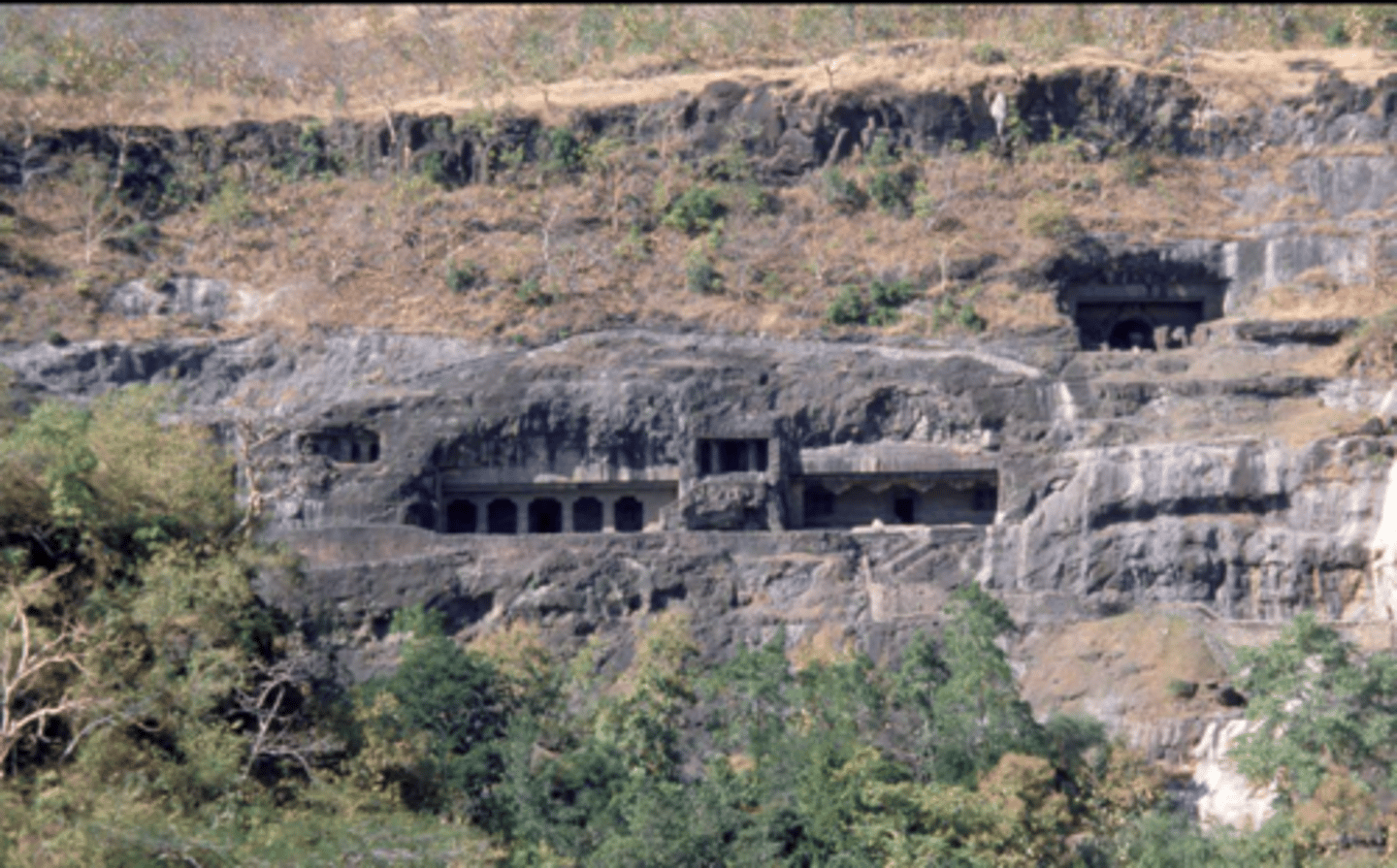
describe the structure of the ajanta caves and why they are like that
they used the natural landscape very shrewdly because they didn't have enough workers to carry up slabs, there is a reliance on pillars both outside and inside, a chance that leftover craftsman from Greece helped with the creation
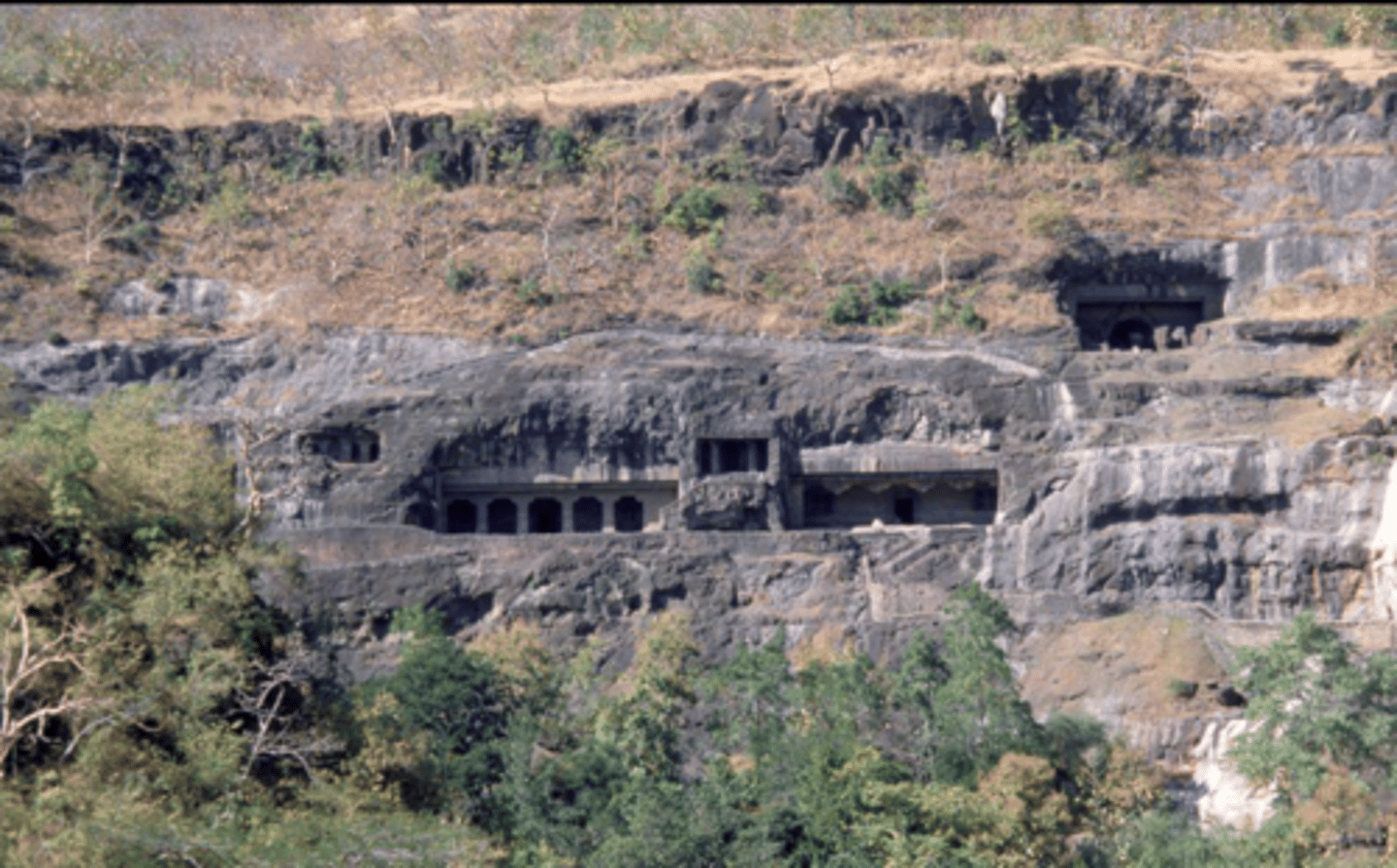
What are the two types of spaces within the ajanta caves
Vihara (monastery) and Chaitiya (worship hall)
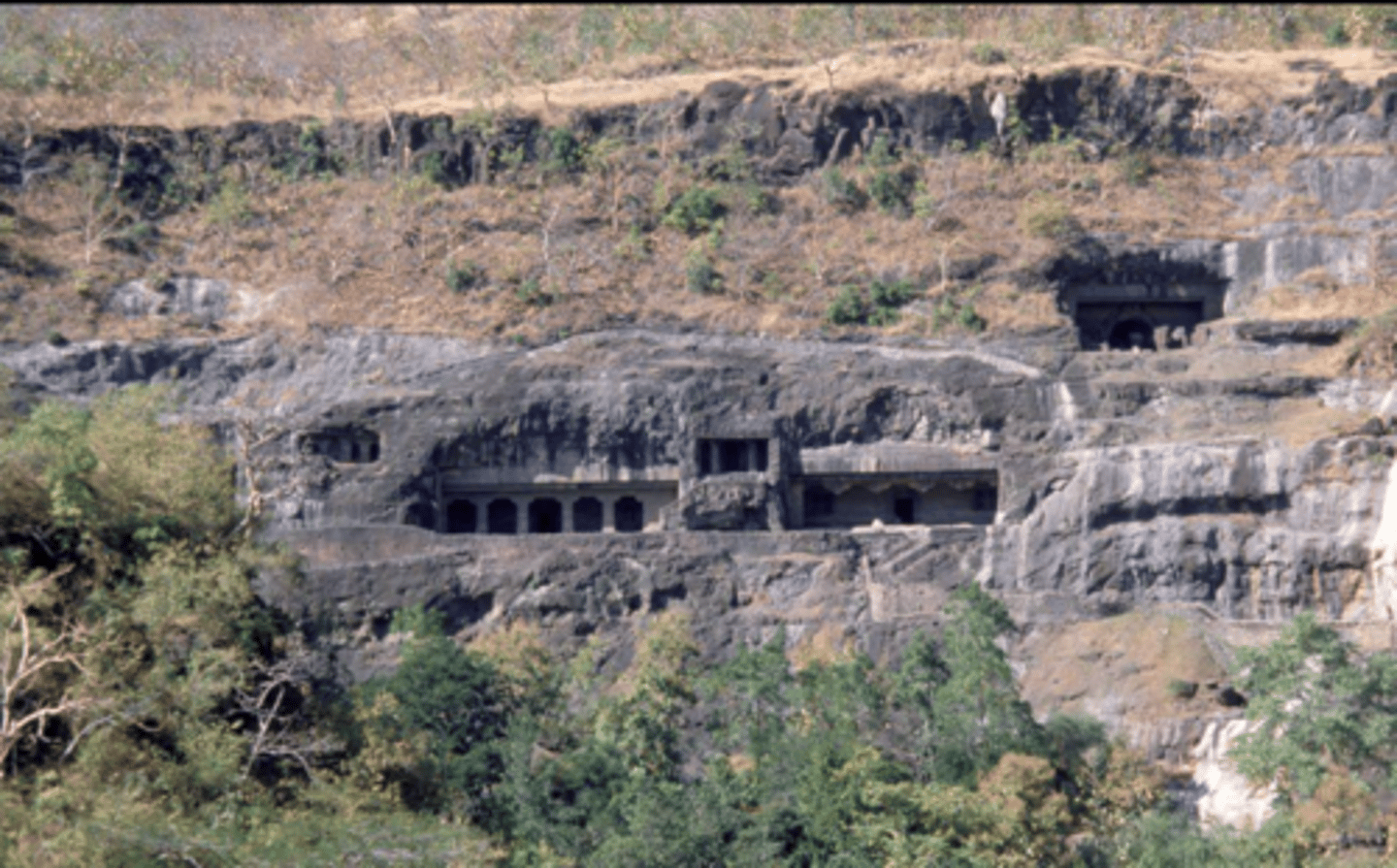
who could use the Vihara monastery in the Ajanta caves
it was off limits to the general public
Prayer hall (chaitiya), Cave 19
picture
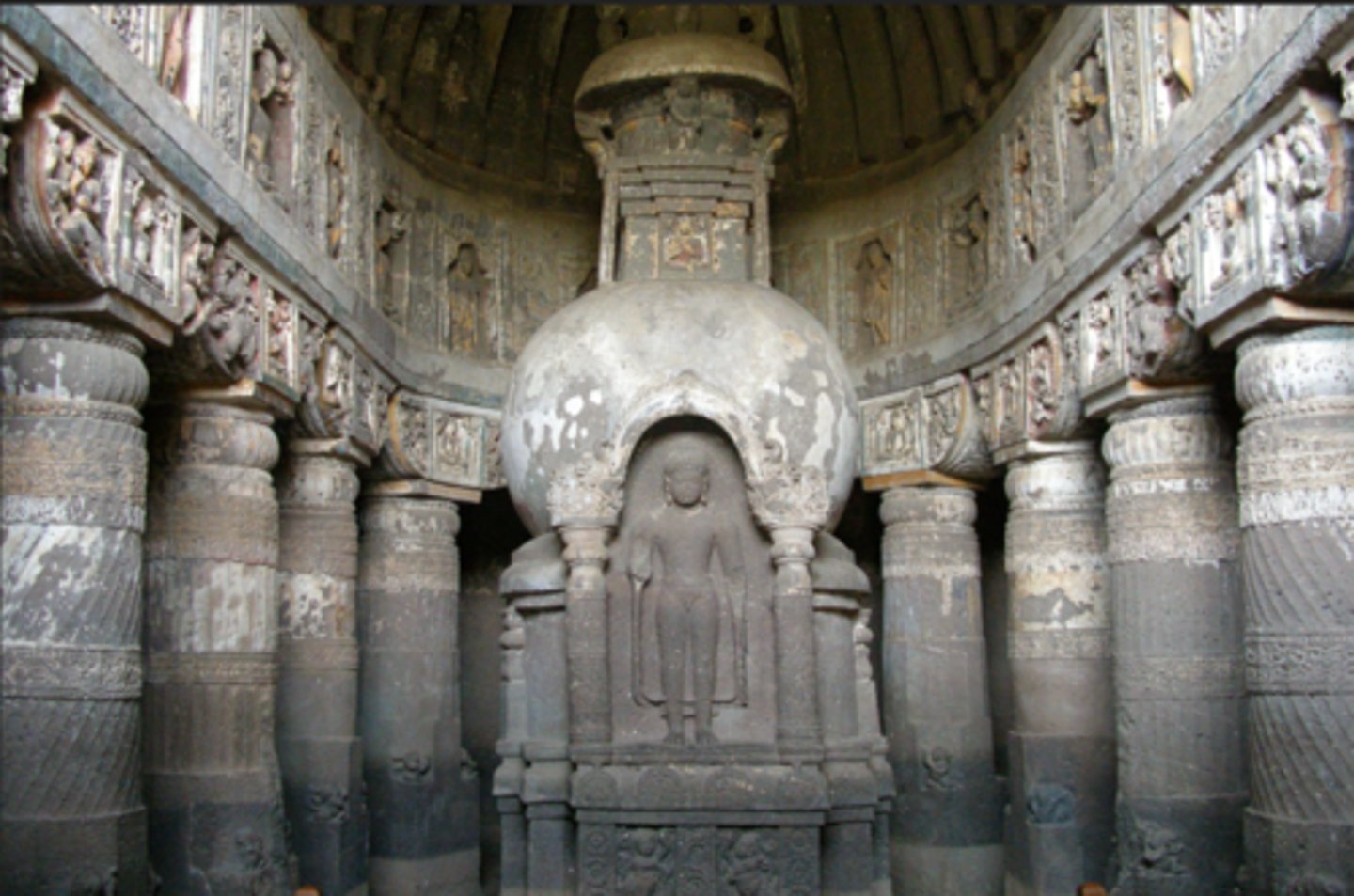
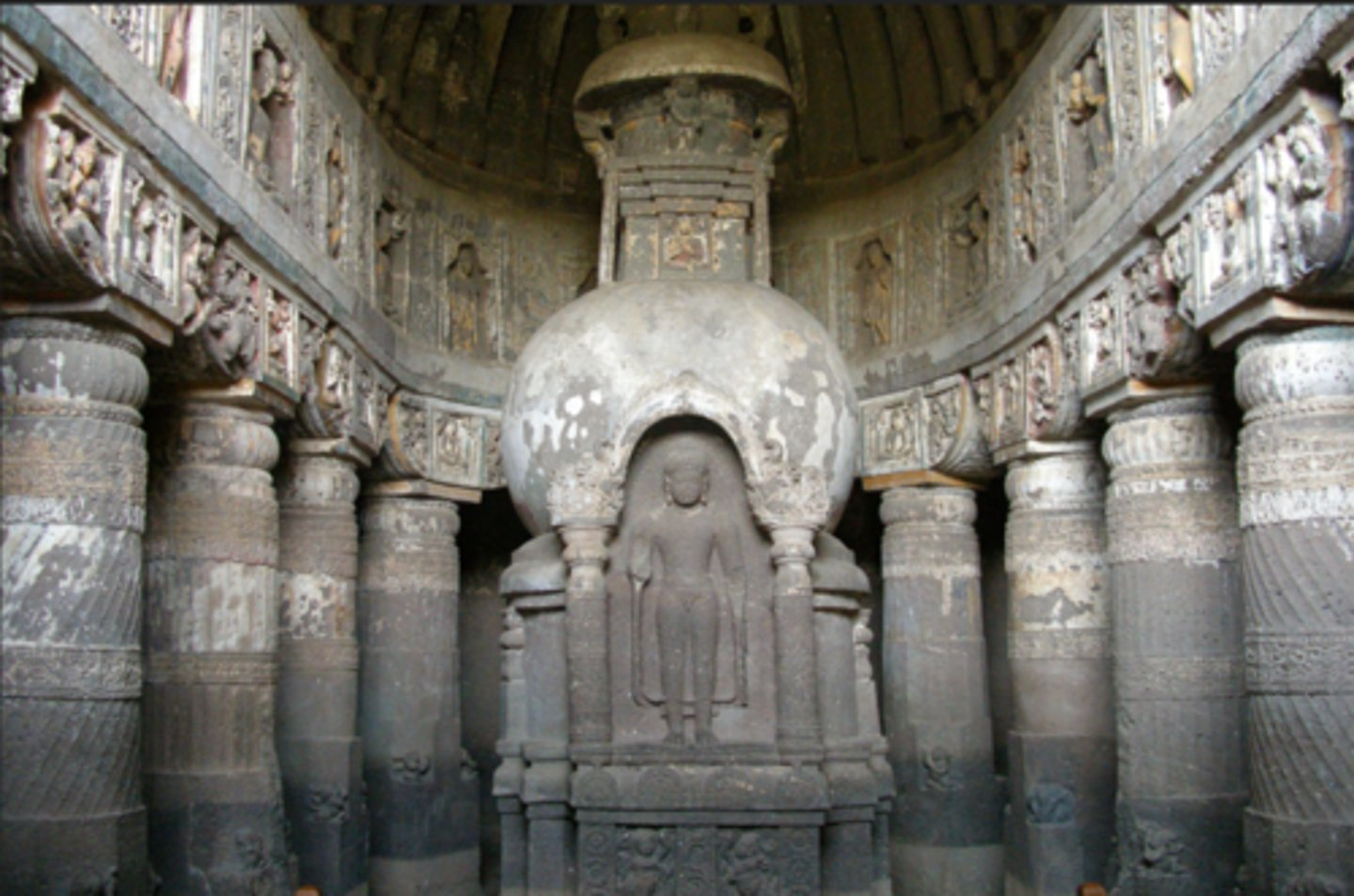
what was the purpose of the worship hall in the Ajanta caves
place that pilgrims would visit
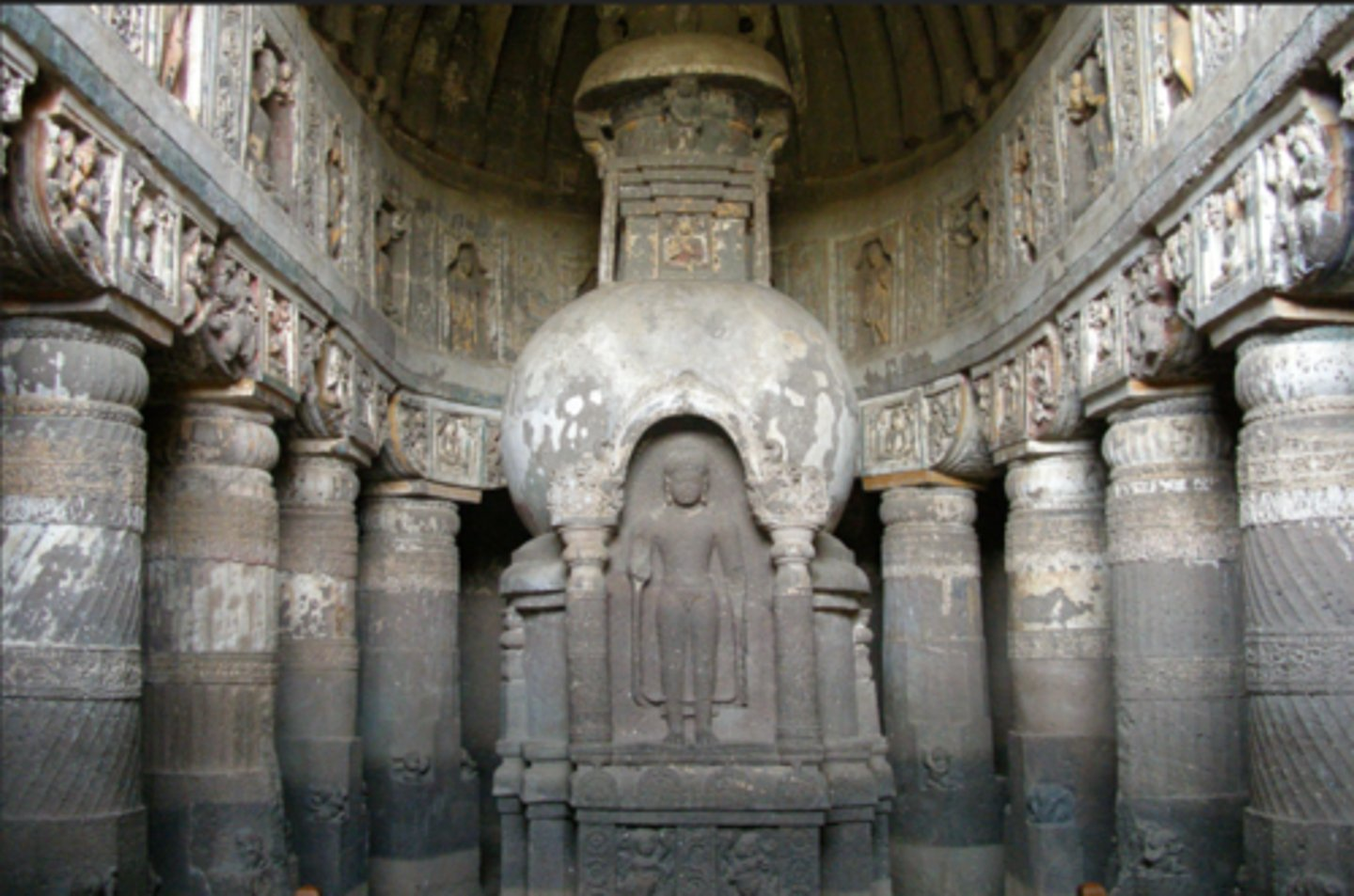
describe the structure of the worship hall in the Ajanta caves
reliance on longitudinal plan, focal point is the middle structure called the stupa (dome shaped structure that contains the relics of the Buddha himself, Buddha carved out), precisonal walkway very narrow, divided by columns, no unity of design
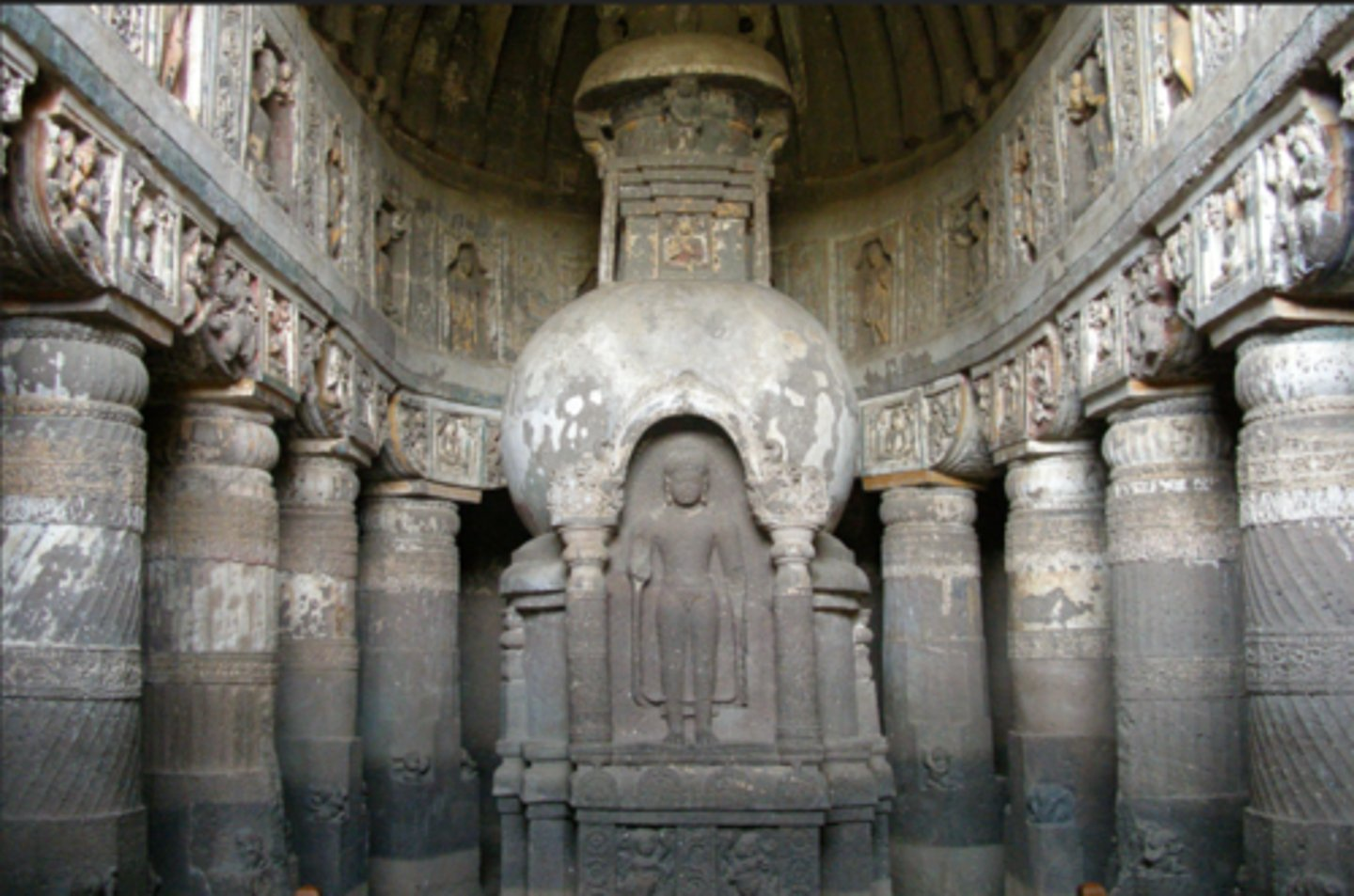
why was the worship hall in the Ajanta caves structured in such a way
horror vacui, fear of emptiness, liked to fill the spaces with art and design
Bodhisattva, Wall painting, Cave 1, late 5th century CE
picture
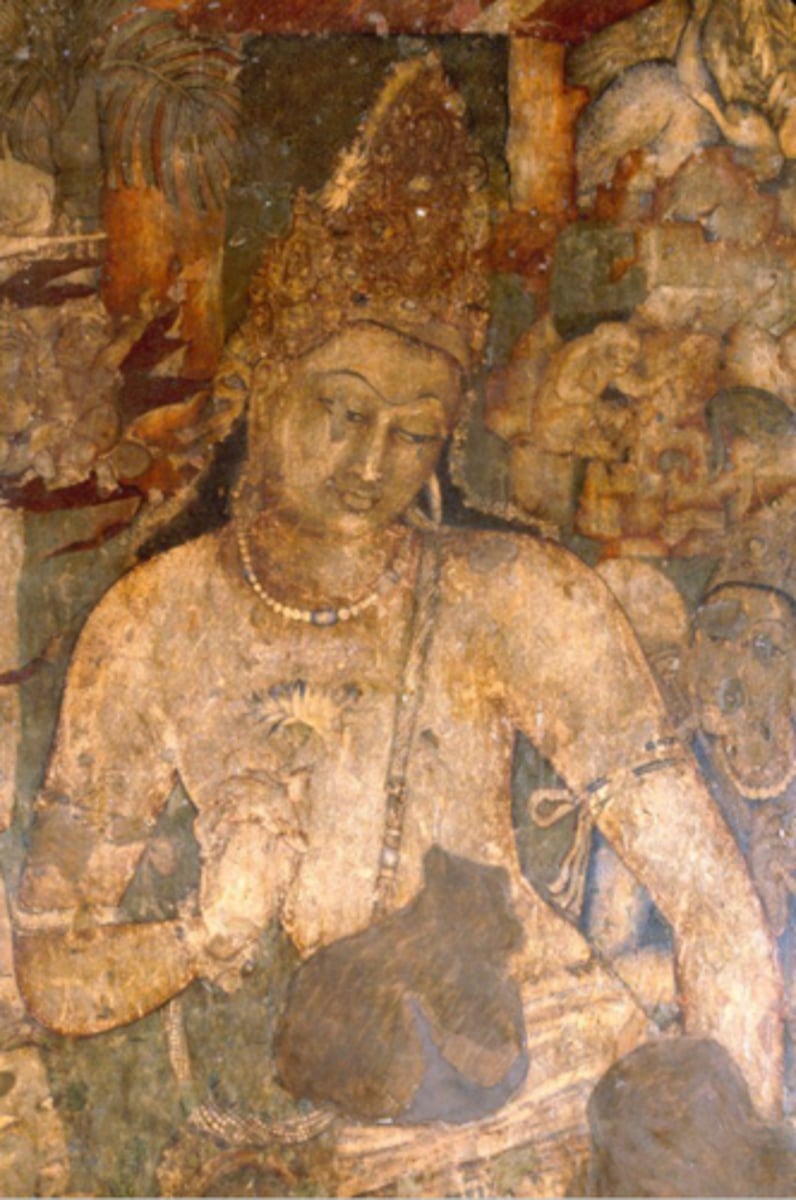
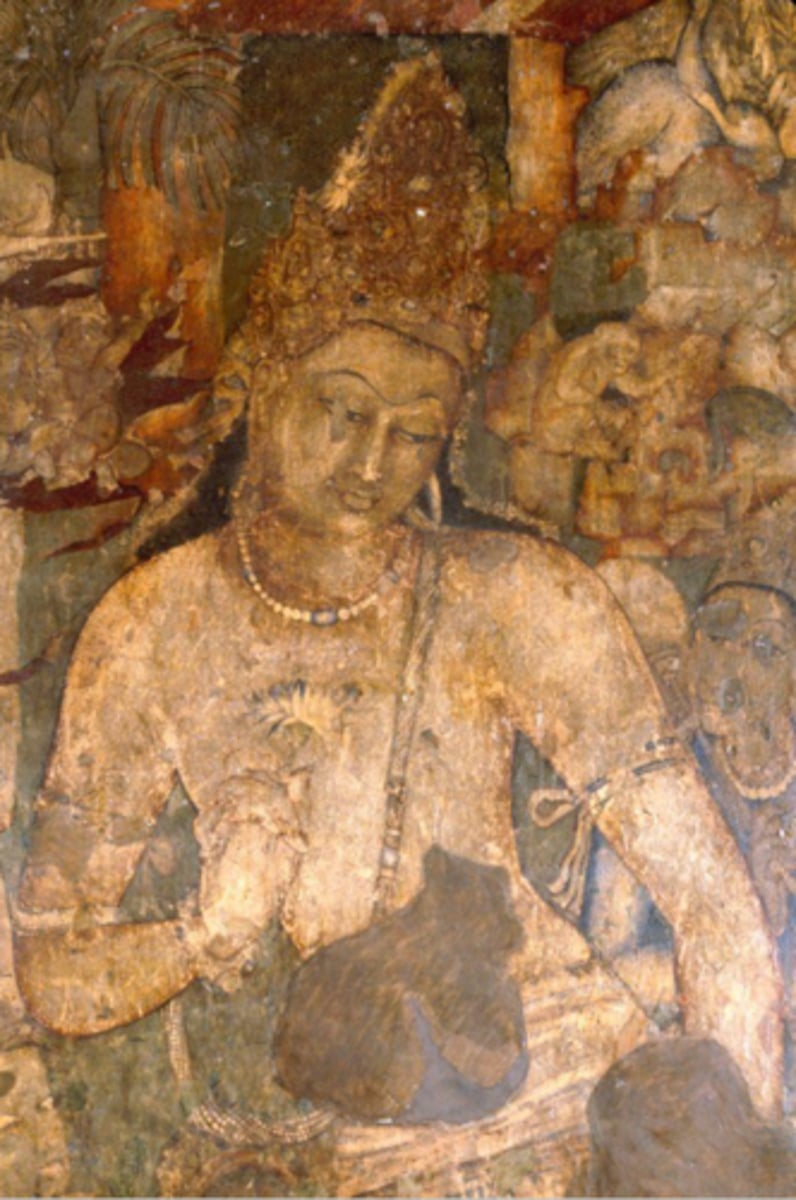
what is the Bodhisattva wall painting and how was it made and significance
it is a dried fresco, prepared with some kind of plaster that dried before adding pigment and painting meaning that it was more easily damaged
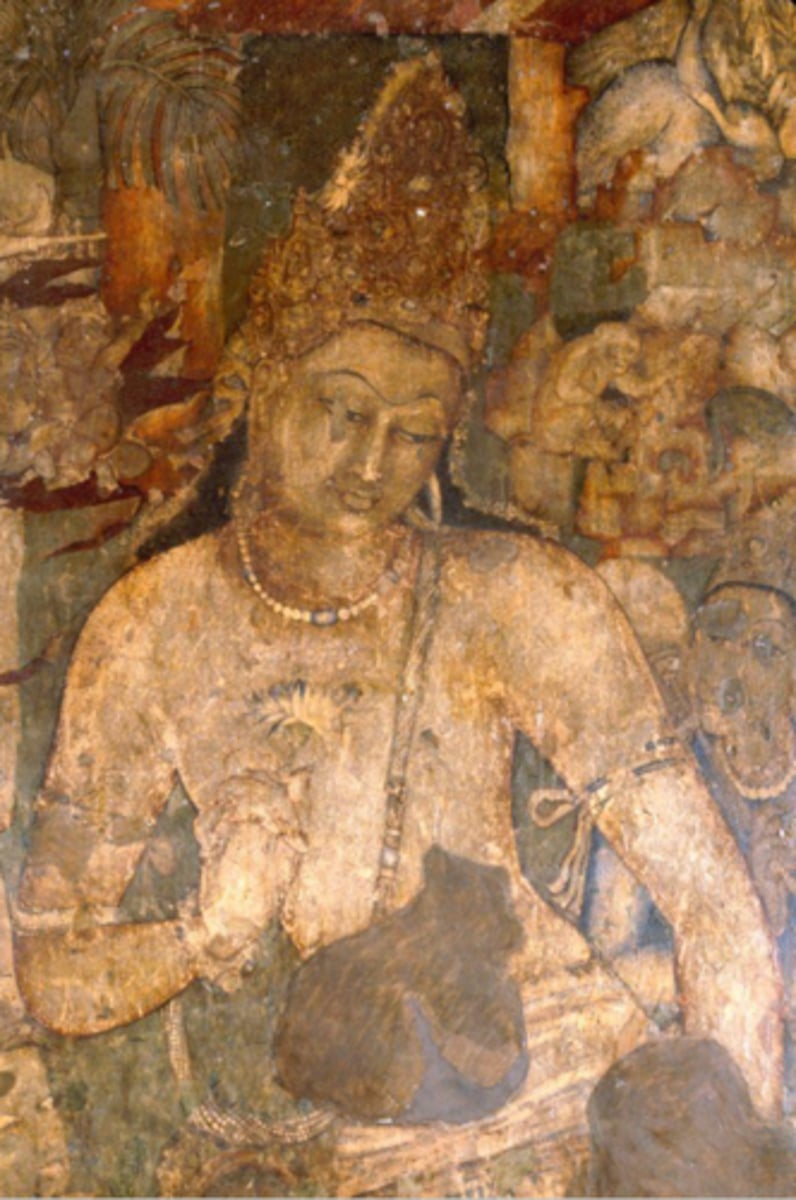
what is the Bodhisattva/what does it depict
another member of the Buddhist pantheon, helper to the Buddha
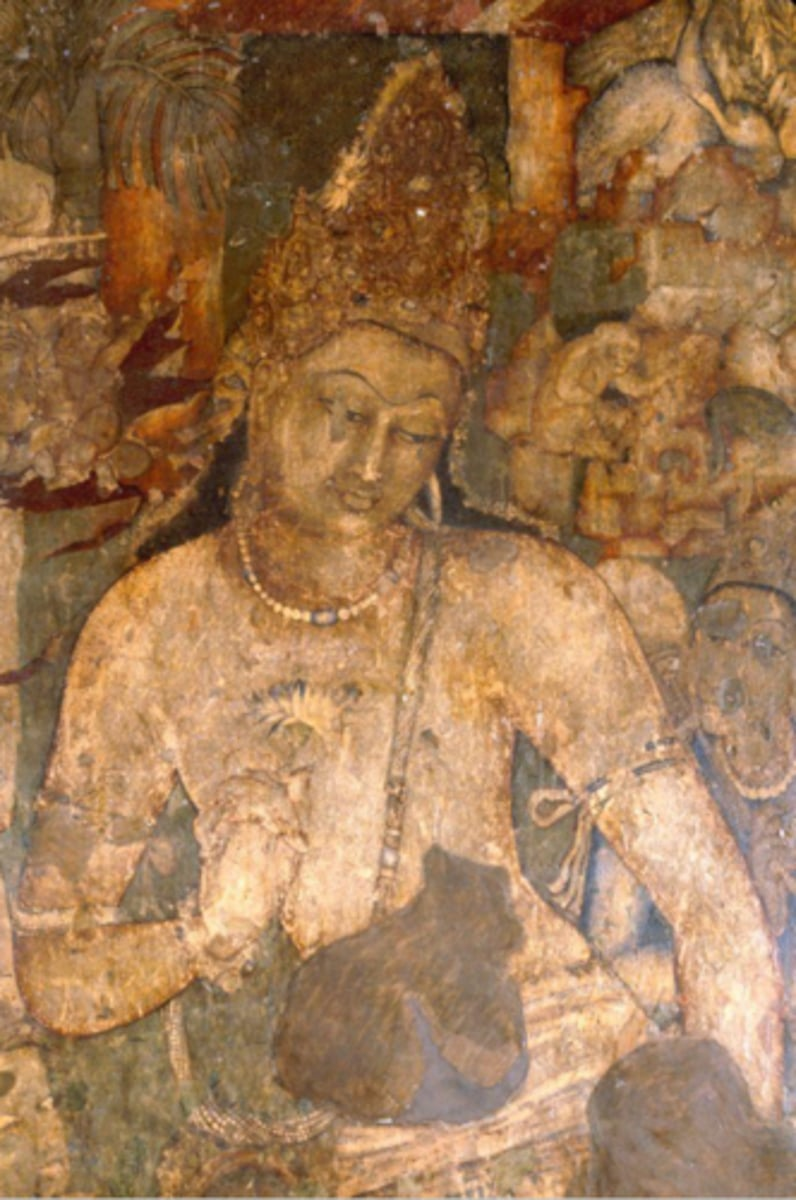
describe the Bodhisattva figure and its significance
more ornate than a Buddha, covered in luxurious, looking down showing deep meditation, viewer is encouraged to emulate the image, not interact
Story of the Golden Deer (Ruru jataka), wall painting, Mogao Caves, Dunhuang, Gansu province, China, 6th century CE; caves built between 4th -14th century CE
picture
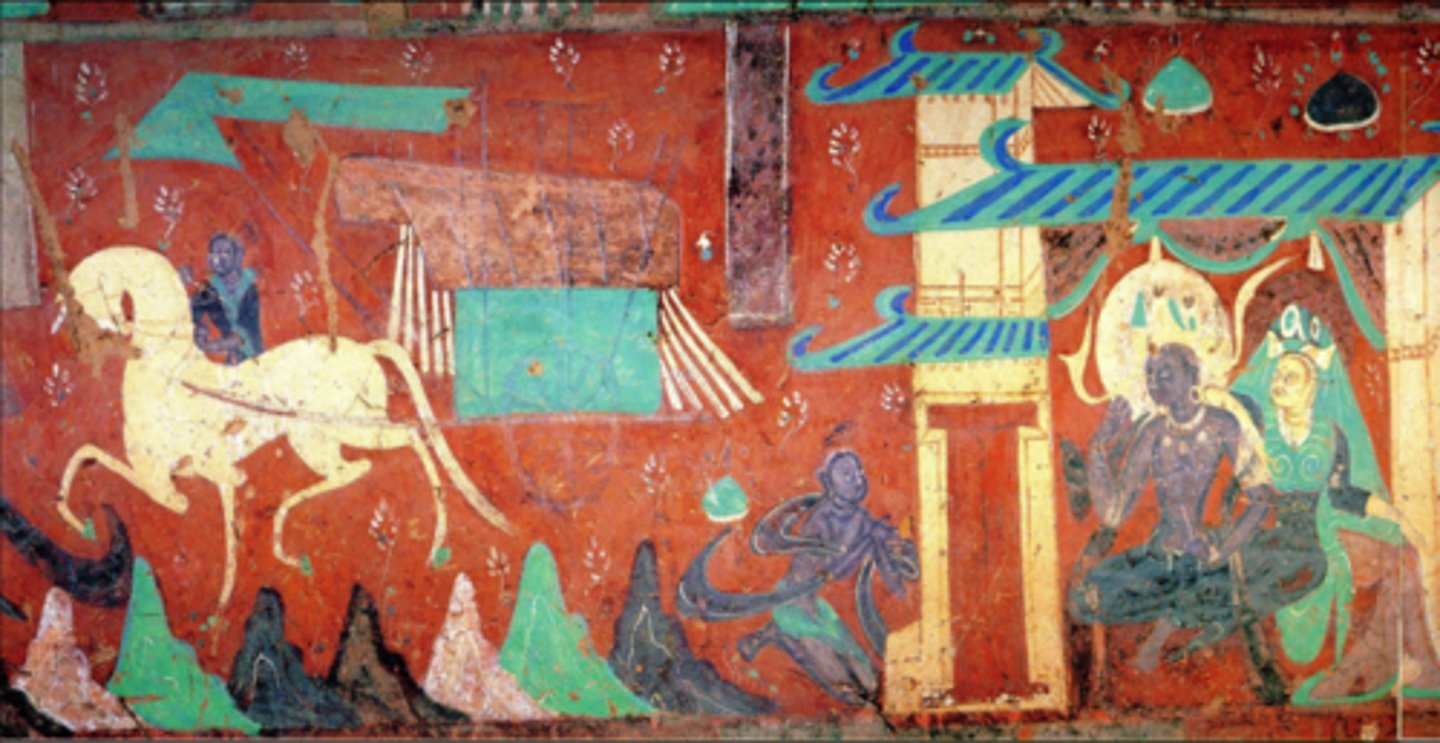
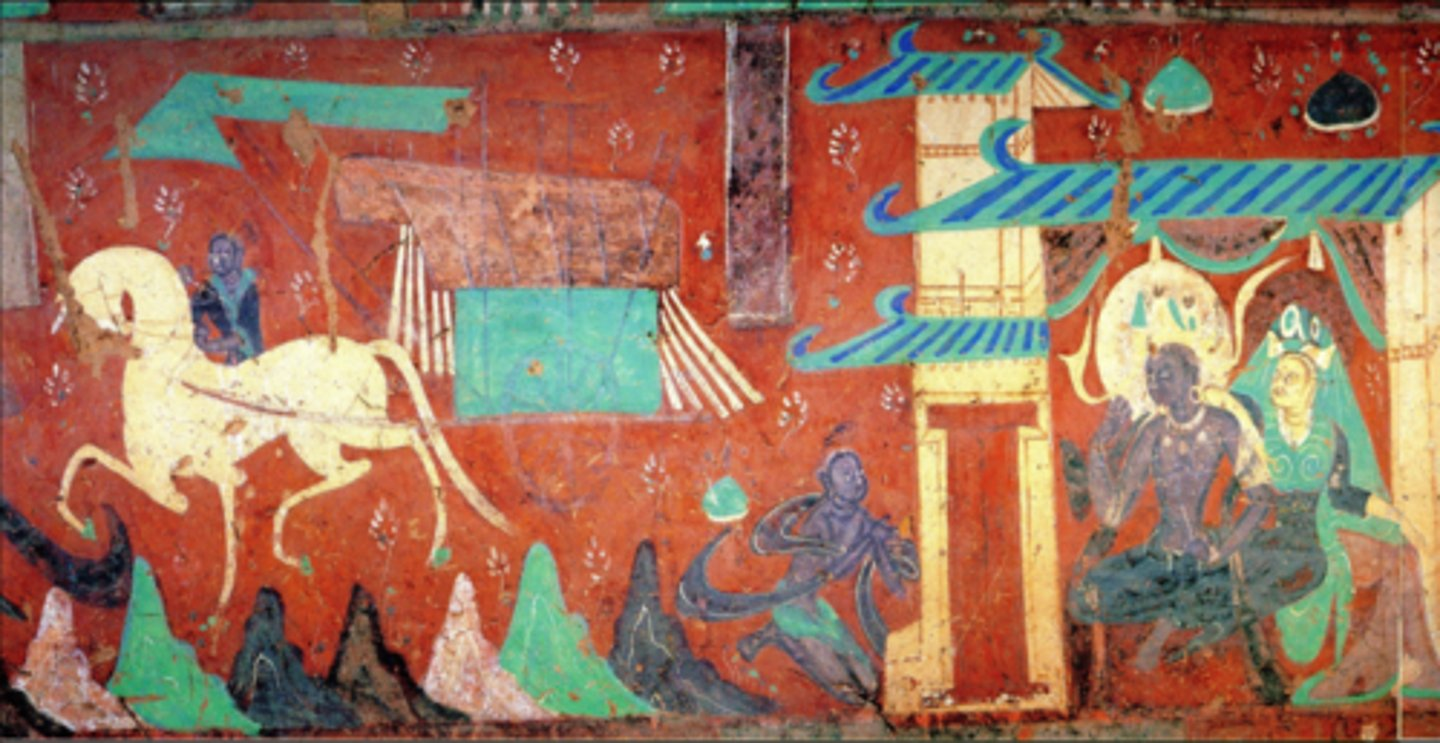
where is the Story of the Golden deer found
in the Magao Caves
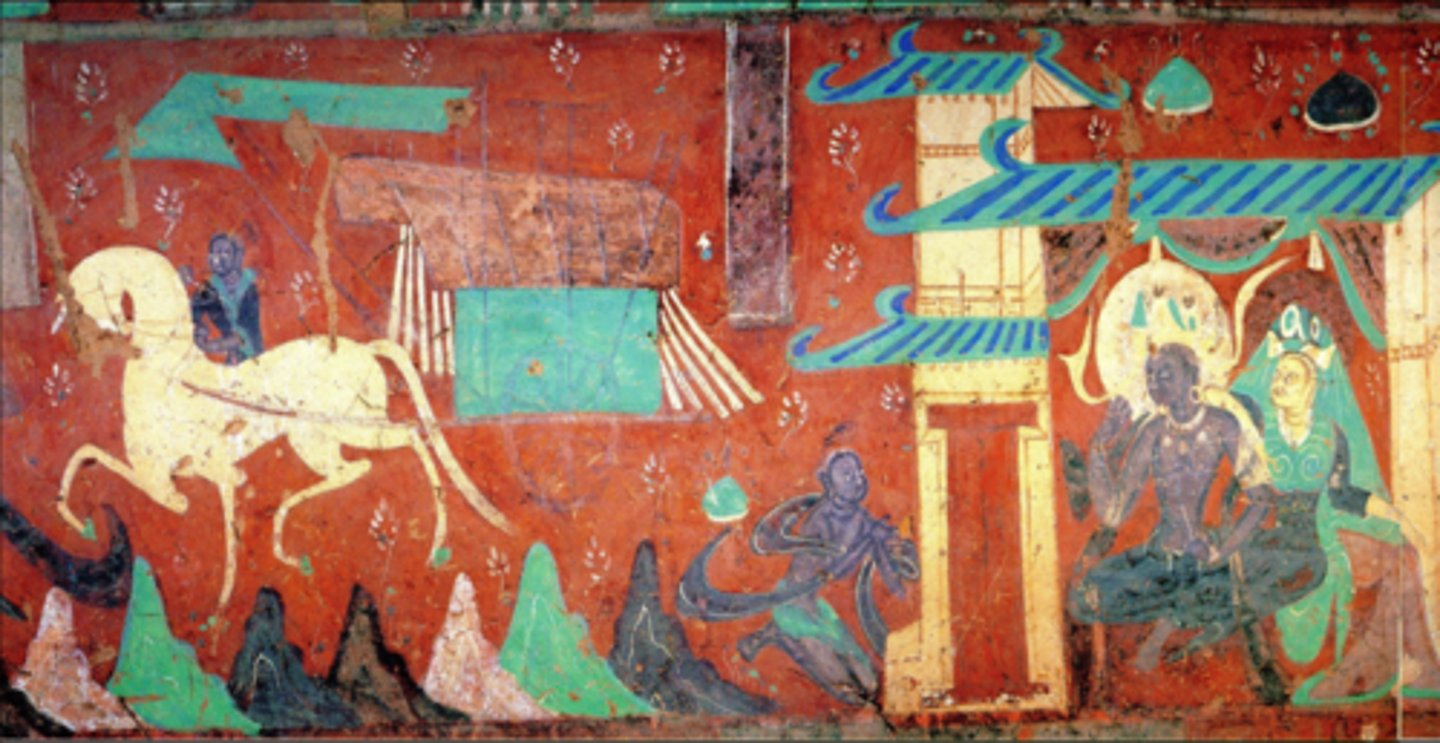
what technique was used on the Golden Deer story
dried fresco technique
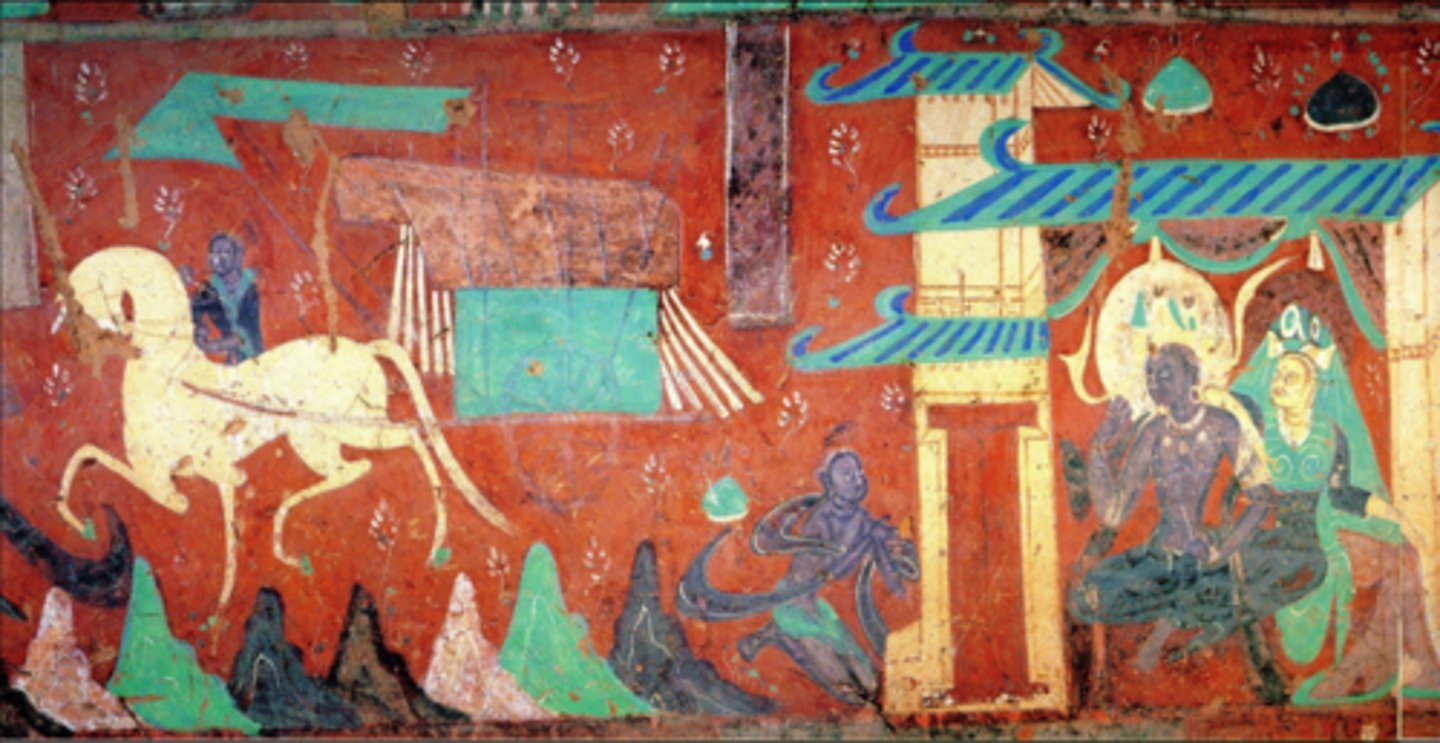
what is the name for the Story of the Golden Deer
Jataka=fable
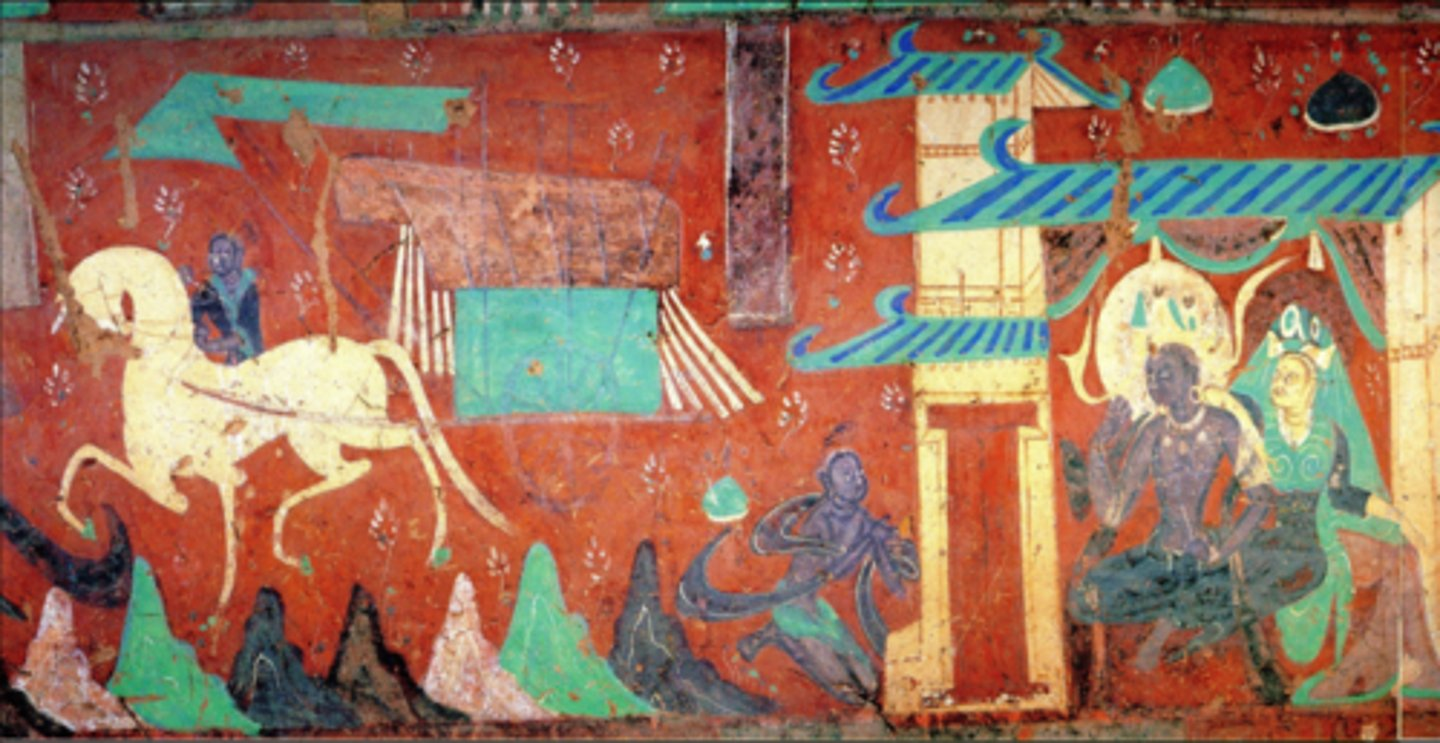
what is the Story of the Golden Deer/what does it depict
there was a drowning man and a magic golden deer that saves the man. The deer tells the man not to tell the king because then the king will skin the deer. The man tells the king immediately and when the king looks for the deer he finds out that it was Bodhisattva in disguise. The king asks Bodhisattva if he should kill the man but the Bodhisattva grants the man forgiveness.
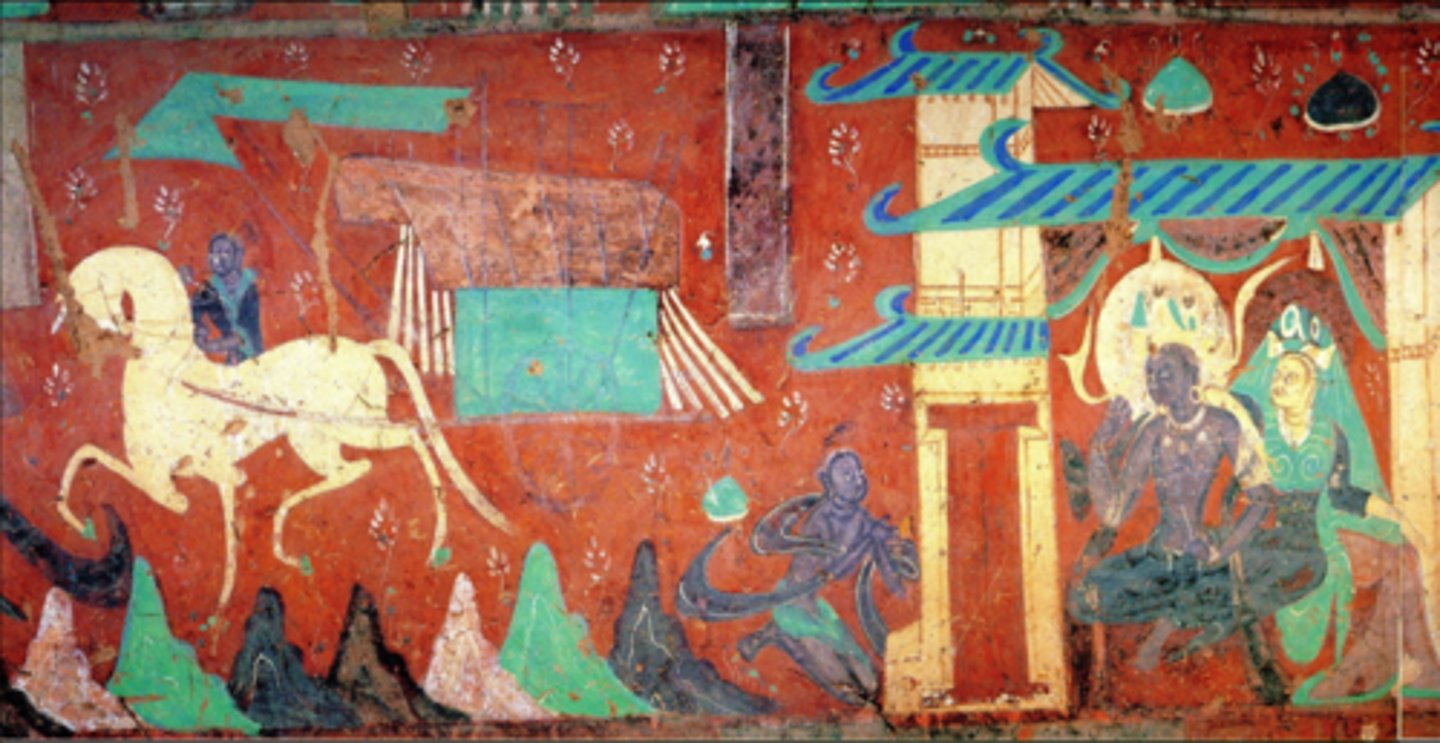
describe the depiction of the story of the golden deer and its significance
the forms are very stylized, relies on vibrant colors which gives an otherworldly quality/belongs to enlightenment
Gu Kaizhi (ca. 344-406 CE). Admonitions of the Court Instructress, ink and color on silk, handscroll, Northern Dynasties, 4th-5th century CE (British Museum)
picture
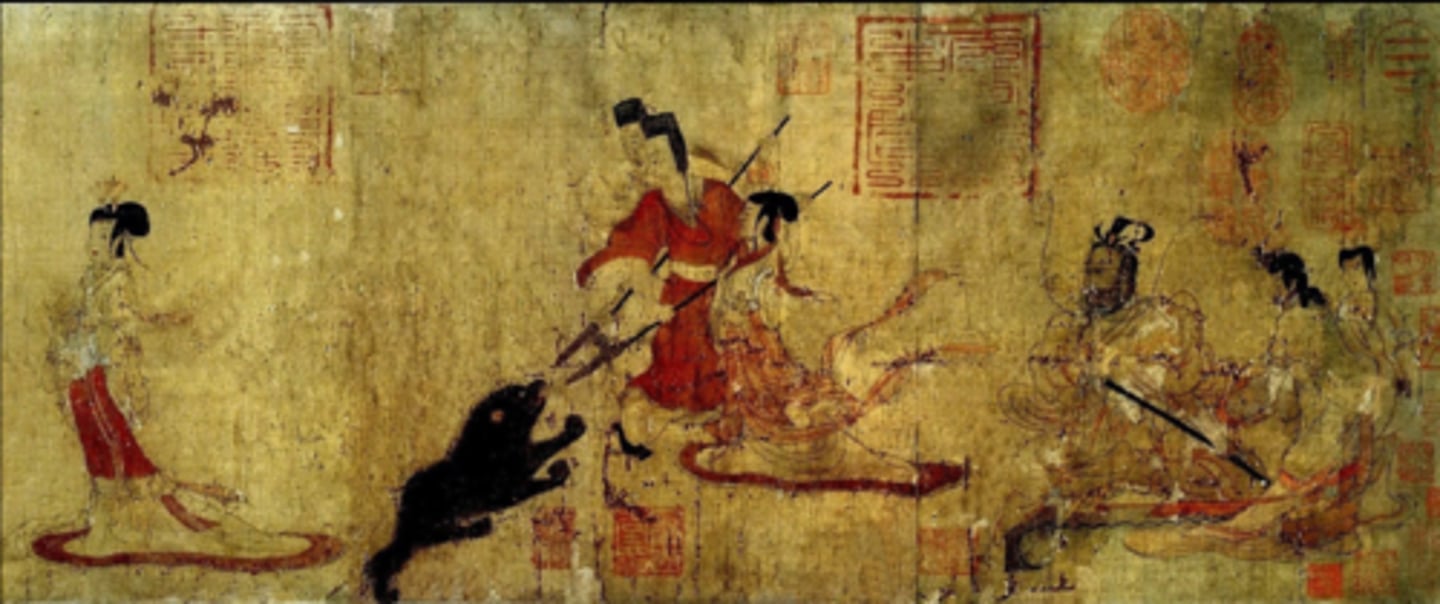
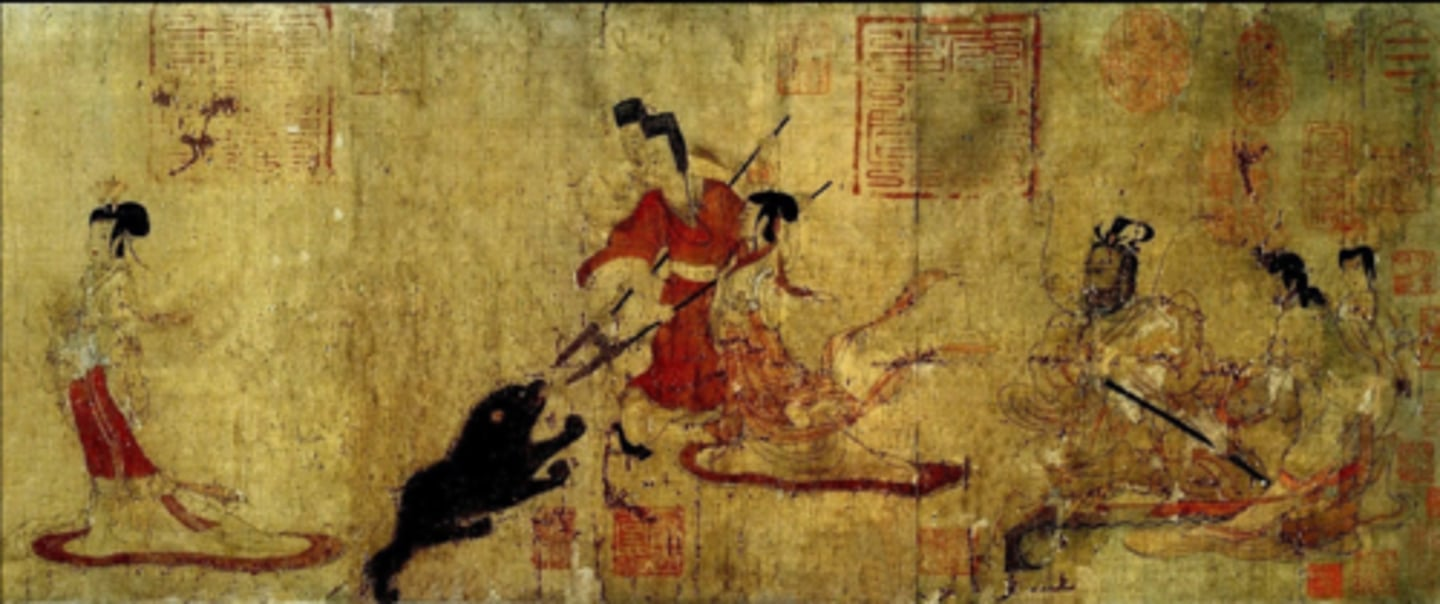
what are the Gu Kaizhi admonitions of the court and who used them
an instructional manual from a Confucian text that was illustrated, would have been spread only to women of the palace
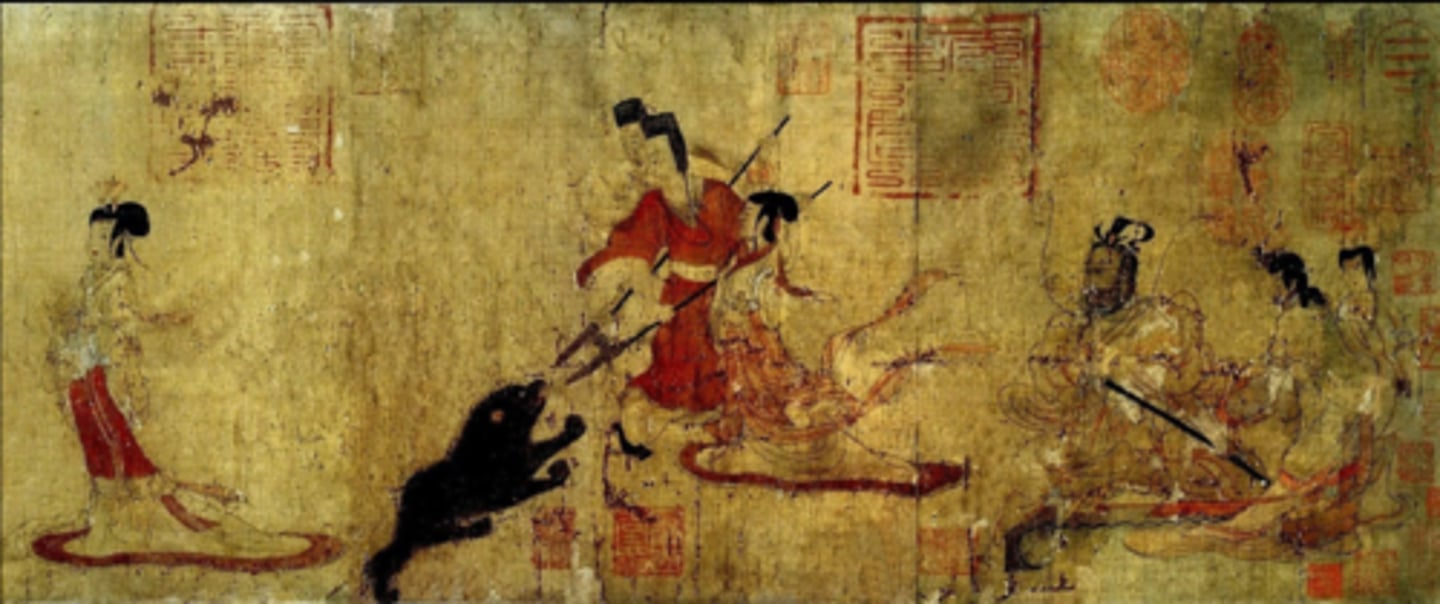
what were the admonitions of the court hand-scrolls used for
used to show legitimacy because they were insecure about the fact that they were ethnically different, and to reinforce Confucian values to legitimize the rulers
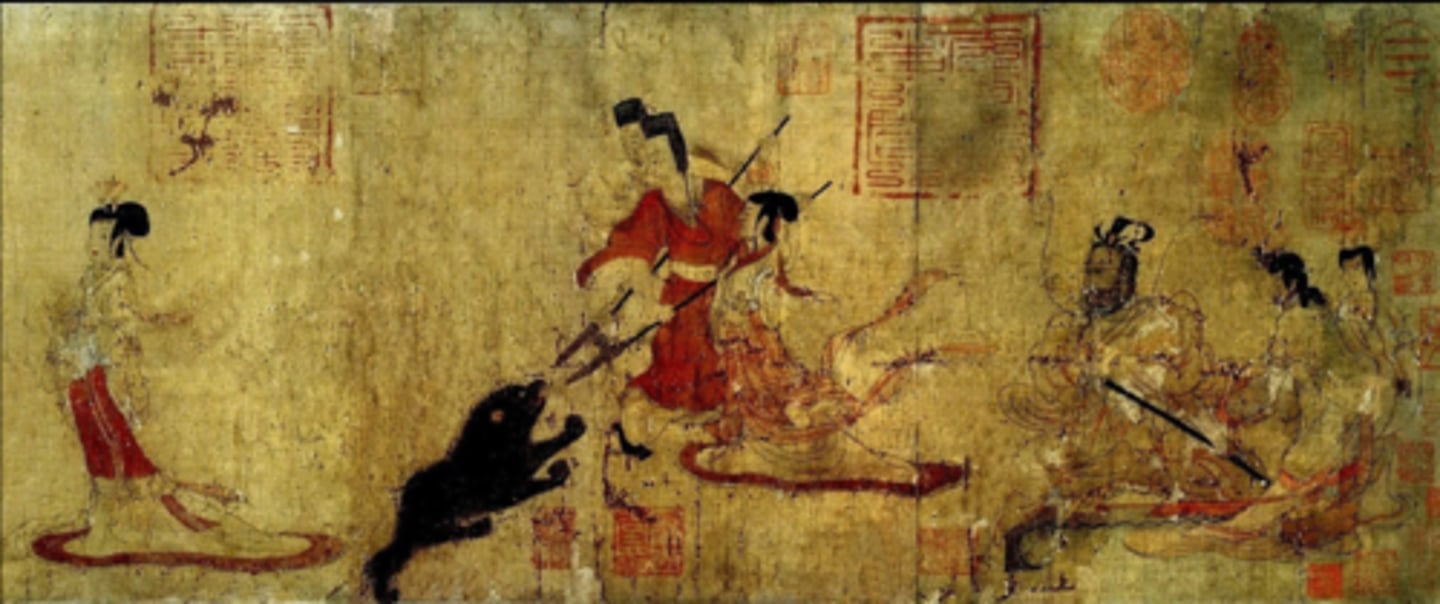
what do the admonitions of the court hand-scrolls depict
a continual visual narrative with episodes that relate to the proper conduct of women
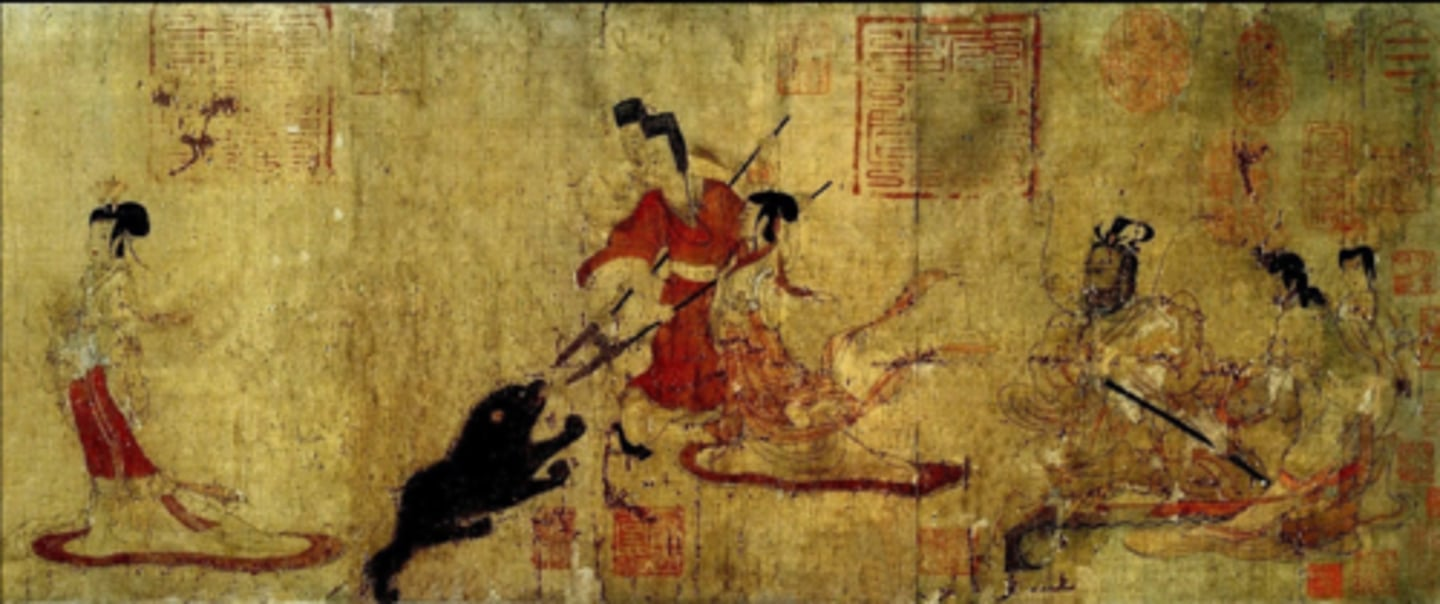
describe one of the scenes in the admonitions of the court hand-scrolls
there is a beautiful woman riding with the emperor, but because she is too beautiful she is distracting attention from the emperor so she gets off the horse and walks behind him, the random props throughout the scenes give a more theatrical feel
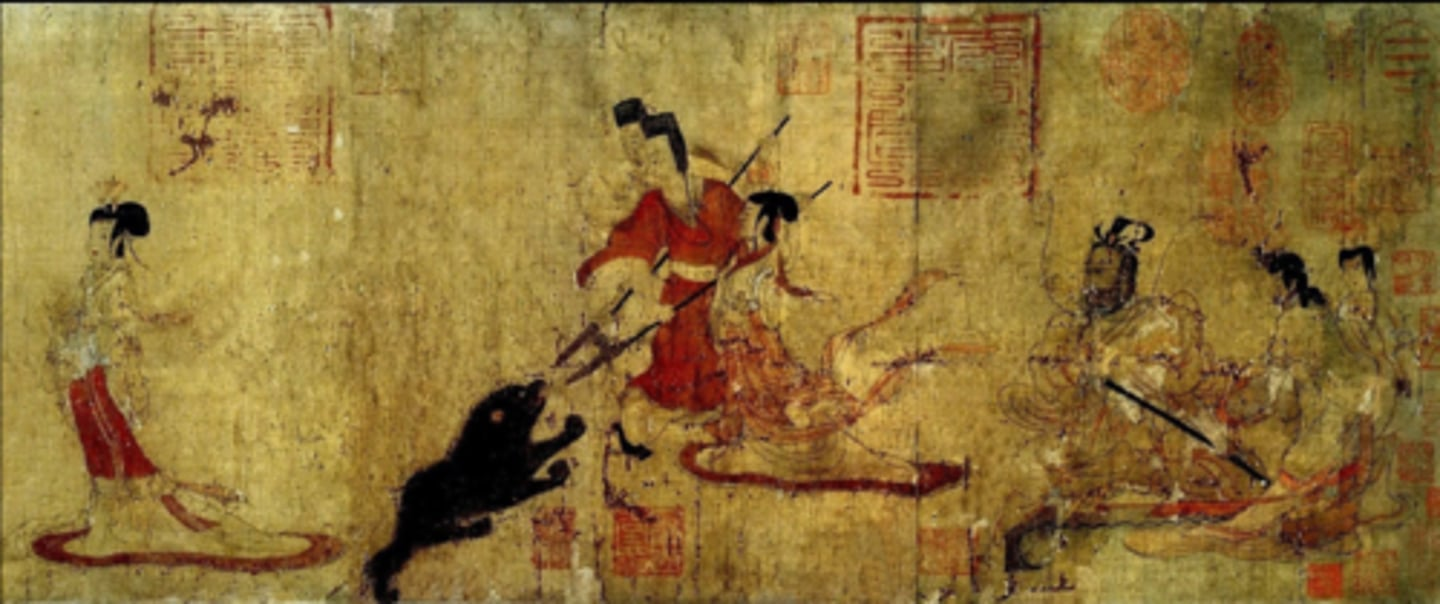
what is the condition of the admonitions of the court hand-scrolls
not in good condition/deteriorating